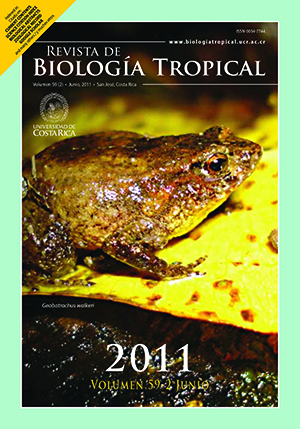Resumen
Avian postnatal growth has received considerable attention and its ecological implications have been deeply analyzed. In this current paper, I describe the patterns of culmen and tarsus growth, as well as of weight gain patterns in eight species of herons and egrets (Aves: Ardeidae) found in the Birama Swamp in Eastern Cuba. Between 1998 and 2006, 714 nestlings of the following species were measured every two days: Butorides virescens, Bubulcus ibis, Egretta thula, E. tricolor, E. caerulea, E. rufescens, Ardea alba and Nycticorax nycticorax. Logistic and Gompertz equations were adjusted to data using non-lineal regression models with adult values as the asymptote. For each species, the following were determined and recorded: growth rate, age at inflexion, instantaneous growth rates at each age interval, and time taken to reach 90% of adult size. Reported hatchling sizes were similar in other localities, with a variation coefficient ranging between 10-19%. At hatch, each species exhibited differing sizes relative to adult values. In all cases, Gompertz equations were best fitted to explain more variance and lesser residuals. Rates of weight change and tarsus growth were alometrically related to the log of adult weight. Two main growth processes were identified: a physical extension in dimensions of each measurement reflecting inter-specific morphometric differences, and a lineal increase of the growth period from Green Heron to Great Egret. The Black-crowned Night Heron, Cattle Egret and Reddish Egret exhibited some unique measurement characteristics in comparison to the remaining members of the family. All results support the hypothesis that hypermorphosis, as the main evolutionary process in the microevolution of Ardeidae, is caused by a delayed final moment of growth.Comentarios

Esta obra está bajo una licencia internacional Creative Commons Atribución 4.0.
Derechos de autor 2011 Revista de Biología Tropical
Descargas
Los datos de descargas todavía no están disponibles.






